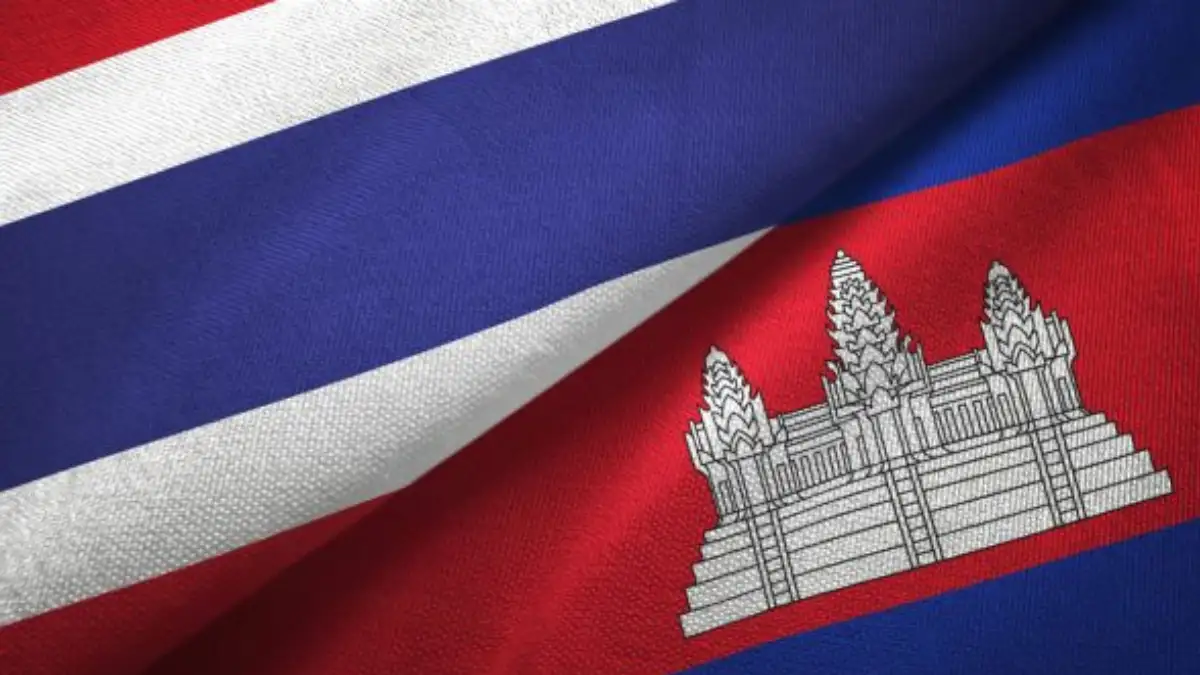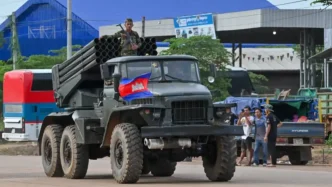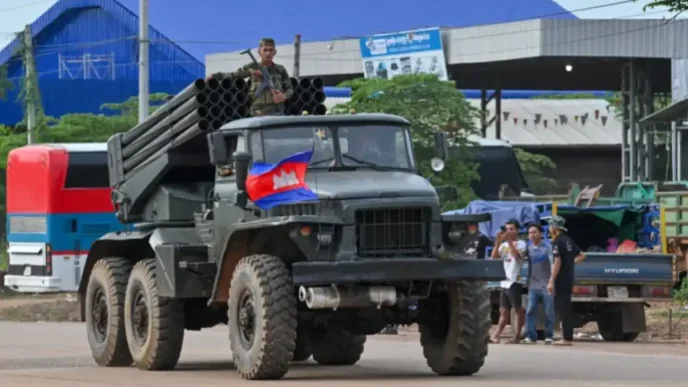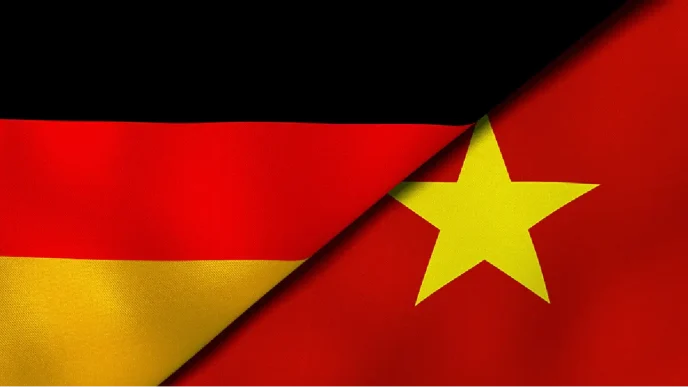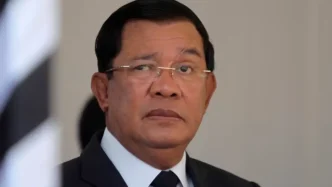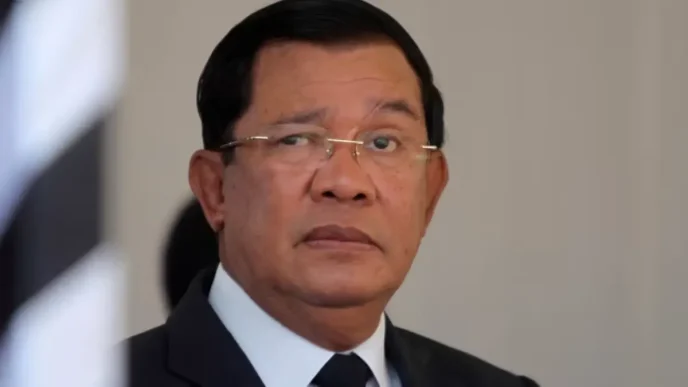A deadly outbreak of violence along the Thai-Cambodian border has reignited long-standing tensions between the two nations, leaving 11 Thai civilians and one soldier dead. In response, Beijing has voiced deep concern, urging both sides to seek a peaceful resolution.
The conflict, rooted in a long-standing territorial dispute, has reignited tensions in a region already grappling with complex geopolitical challenges. China, alongside other regional and international actors, is now calling for dialogue and restraint to prevent further escalation.
Violence Erupts in Disputed Border Zone
The latest armed confrontation, which broke out on Thursday, has claimed lives across three Thai provinces, according to local media reports. The disputed border area, a flashpoint for decades, remains a source of friction between Thailand and Cambodia, both key members of the Association of Southeast Asian Nations (ASEAN). While the immediate trigger for the clash remains unclear, the incident underscores the fragility of peace in the region and the urgent need for a lasting resolution.
China, a major regional power with close ties to both nations, has positioned itself as a mediator. At a regular news briefing in Beijing, Foreign Ministry spokesman Guo Jiakun expressed hope that the two sides would address their differences through dialogue. “We are deeply concerned about the current developments and hope that the two sides will resolve their issues properly through dialogue and consultation” Guo stated on Monday. He emphasized that such an approach aligns with the fundamental and long-term interests of all parties involved.
Guo also highlighted China’s commitment to facilitating peace, noting that Beijing has maintained a fair and impartial stance. “China has been and will continue to facilitate peace and dialogue in its own way, playing a constructive role in easing tensions and cooling down the situation” he added. While specifics of China’s diplomatic efforts were not disclosed, the statement reflects Beijing’s broader strategy of promoting stability in Southeast Asia, a region critical to its economic and political interests.
ASEAN’s Role Under Scrutiny
As tensions simmer, attention has turned to ASEAN, the regional bloc tasked with fostering cooperation and stability among its ten member states. However, ASEAN’s principle of non-interference often limits its ability to intervene directly in disputes between members unless explicitly invited. This policy, while designed to preserve sovereignty and maintain regional harmony, has drawn quiet dissatisfaction from some leaders who see the current crisis as a test of the organization’s relevance.
Him Rotha, Deputy Director of the Cambodian Centre for Regional Studies, underscored ASEAN’s potential role in de-escalation. Speaking to local media on Monday, Rotha argued that the bloc should leverage its mechanisms, including discreet diplomacy, to encourage dialogue between Thailand and Cambodia. “Constructive engagement is key to easing tensions and contribute to peaceful solutions” he said. He also pointed to the ASEAN Charter and the Treaty of Amity and Cooperation, which prioritize peaceful dispute resolution as a core principle.
Rotha further noted that the border tensions carry implications for broader regional stability, urging external partners to support diplomatic efforts. “ASEAN and external partners should step up their diplomatic efforts to continue to encourage both sides to have dialogues. Dialogues are important in difficult circumstances like this,” he emphasized. His comments reflect a growing sentiment that the crisis extends beyond a bilateral issue, posing risks to ASEAN’s collective vision of integration and peace.
Despite past diplomatic efforts, progress remains elusive, with recent interventions yielding little tangible result. In June, Malaysian Prime Minister Anwar Ibrahim, who will assume the role of ASEAN Chair in 2025, called on both nations to ease tensions and pursue a comprehensive resolution. Similarly, Singapore’s Prime Minister Lawrence Wong, during a visit to Cambodia in early July, urged restraint and dialogue, framing the issue as a matter of regional interest. Despite these appeals, the lack of updates on any tangible outcomes highlights the challenges of navigating deeply entrenched disputes within the ASEAN framework. Critics of ASEAN diplomacy say that the call to action by leadership was not strong enough, leaving both nations to continue on the path towards all out conflict.
Historical Grievances and Legal Battles
The Thai-Cambodian border dispute is far from a recent phenomenon. Spanning decades, it centers on several contested areas, including the sites of ancient temples such as Mom Bei, Ta Moan Thom, Ta Moan Tauch, and Ta Krabei. Bilateral talks and mechanisms like the Joint Border Committee (JBC) have repeatedly failed to produce a lasting agreement, fueling frustration on both sides.
Cambodia has taken a decisive step by escalating the matter to the International Court of Justice (ICJ), signaling a shift away from direct negotiations with Thailand over these specific areas. Pen Bona, a Cambodian government spokesperson, confirmed this stance in a recent statement. “That’s why Cambodia decided to bring Mom Bei, Ta Moan Thom, Ta Moan Tauch, and Ta Krabei temple areas to the International Court of Justice. There will be no talks on them anymore with Thailand,” he told local media. This move underscores Cambodia’s determination to seek an international ruling, potentially complicating future diplomatic efforts.
The historical and cultural significance of these sites adds another layer of complexity. Both nations claim ownership based on colonial-era treaties and national heritage, a contention that has periodically erupted into violence. The current clash, while limited in scope, serves as a stark reminder of unresolved grievances that continue to haunt bilateral relations.
International Voices Join the Call for Peace
Beyond ASEAN and China, other international actors have weighed in on the crisis, emphasizing the importance of a cooperative relationship between Thailand and Cambodia for regional stability. Japan, a long-standing partner in Southeast Asia, has expressed hope for constructive discussions between the two governments. A statement from the Japanese Embassy confirmed Tokyo’s belief that a solid partnership between the neighboring countries is vital not only for their own development but for the broader region. While refraining from detailing specific diplomatic exchanges, the embassy noted that Japan has conveyed this message through various channels.
The convergence of voices—ranging from China’s measured diplomacy to ASEAN’s cautious engagement and Japan’s supportive stance—illustrates the international community’s recognition of the stakes involved. A protracted conflict risks destabilizing a region already navigating challenges such as economic recovery, maritime disputes, and great power rivalries. For Thailand and Cambodia, the pressure to find a peaceful path forward is mounting, even as domestic political considerations and historical animosities complicate the process.
Challenges of Dialogue in a Tense Environment
While dialogue remains the preferred solution, implementing it amid heightened tensions is no small feat. Both Thailand and Cambodia face internal pressures that shape their approaches to the border issue. In Thailand, nationalist sentiments often influence public discourse on territorial integrity, limiting the government’s room for compromise. Similarly, in Cambodia, the dispute is tied to national pride and historical narratives, making concessions politically sensitive.
ASEAN’s hands-off approach, while rooted in respect for sovereignty, may also hinder swift resolution. The bloc’s reluctance to intervene without a formal request means that mediation efforts often lag behind the pace of escalating tensions. Critics argue that this reactive stance undermines ASEAN’s credibility as a stabilizing force, particularly when bilateral mechanisms like the JBC fail to deliver results.
External facilitation, as offered by China and echoed by Japan, could provide a way forward, but it requires trust from both parties. China’s role, in particular, will be closely watched given its significant economic influence in the region through initiatives like the Belt and Road. However, any perception of bias or overreach could undermine Beijing’s credibility as a neutral mediator.
Looking Ahead: A Test for Regional Unity
The Thai-Cambodian border clash is more than a localized conflict; it is a litmus test for ASEAN’s ability to manage internal disputes and for the region’s commitment to collective stability. As calls for dialogue grow louder, the path to de-escalation remains fraught with obstacles, from historical disputes to domestic political dynamics.
For now, the focus remains on preventing further loss of life and containing the fallout. With 11 civilians and one soldier already killed, the human cost of inaction is painfully clear. Whether through ASEAN’s quiet diplomacy, China’s constructive engagement, or international support, the urgency of finding a peaceful resolution cannot be overstated. As the situation unfolds, the question lingers: can decades of discord finally give way to dialogue, or will the border remain a flashpoint in Southeast Asia’s fragile peace?


